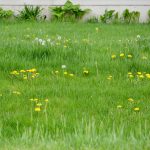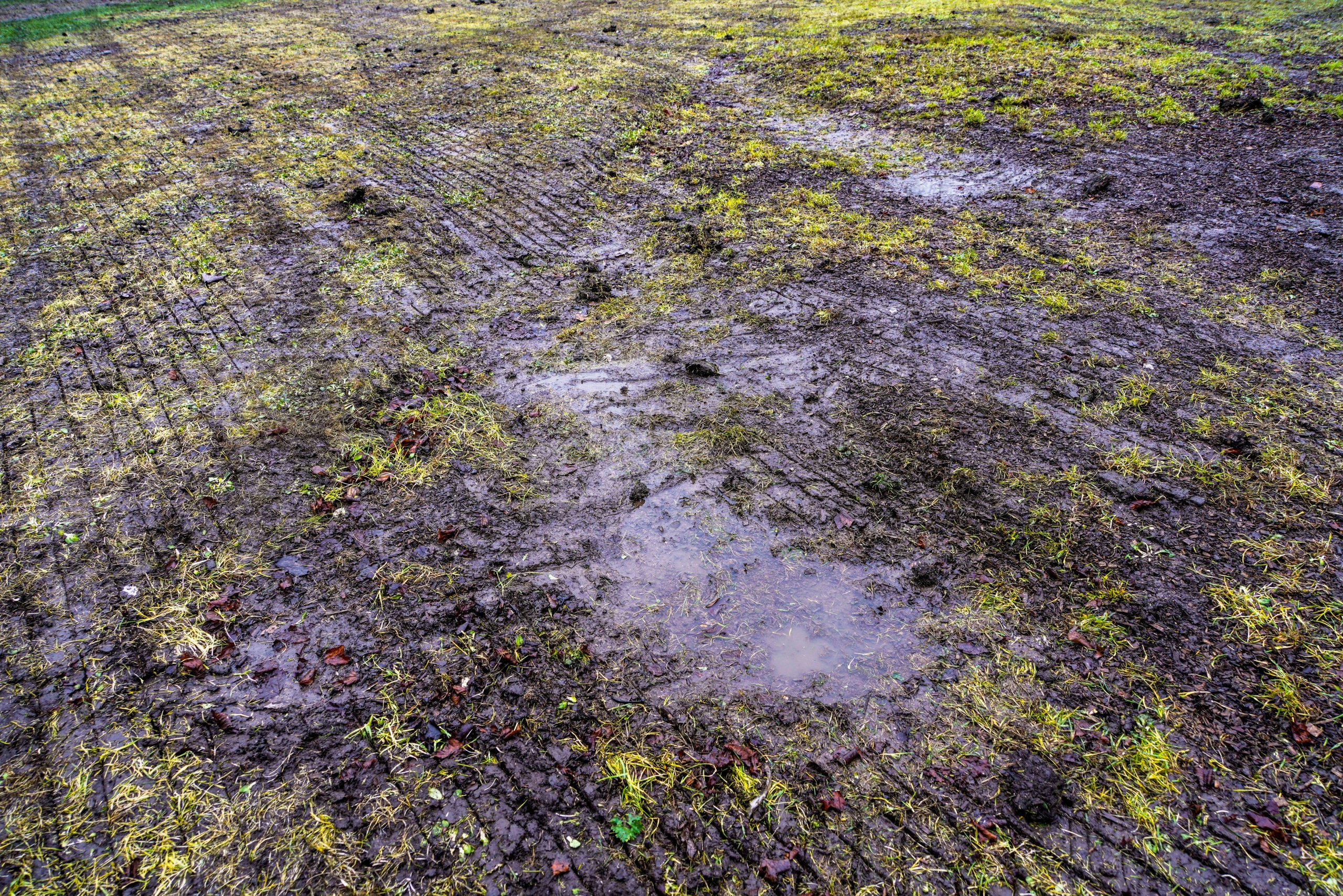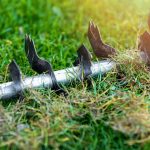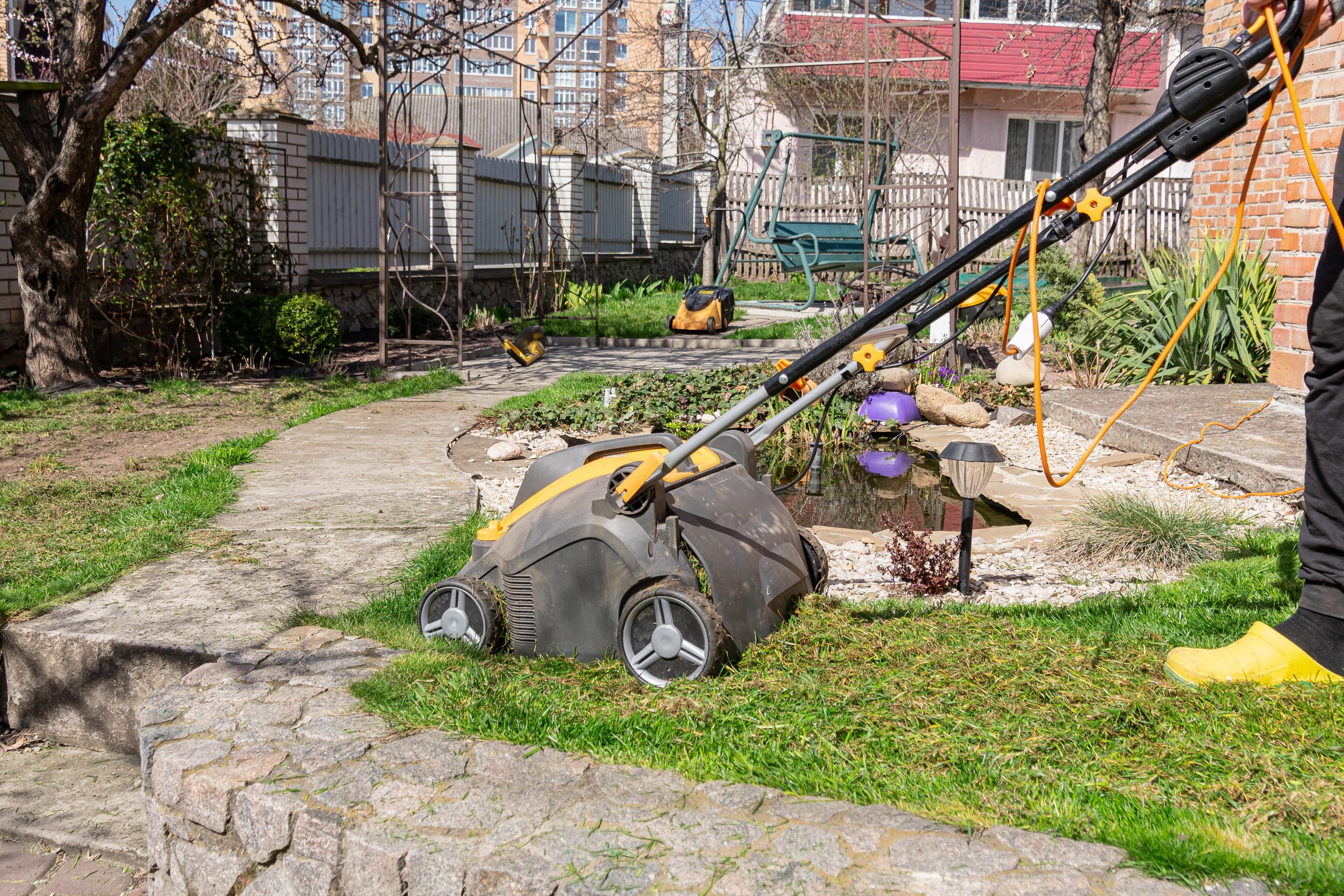Lawn scarification is becoming more popular every year. Every spring I see more and more people wanting to give scarification a try to better the look and health or their lawn and this is usually a great idea. When done correctly, scarifying is great for removing moss and the accumulation of thatch – a spongy layer of debris on the ground. The benefits of removing an excess amount of this layer are great! You get more airflow and water down into the root system which can massively help improve the quality of your lawn.
Raking out the debris with a scarifier can make your lawn healthier and look better in the long run but if you’ve ever tried to do this yourself, you will have noticed that your lawn can look pretty dull for a while after.
Assuming mostly ideal weather conditions, it usually takes a lawn 6 weeks to recover after scarifying. This recovery time assumes the lawn will receive an adequate amount of water, sunlight and fertilizer necessary for the healing during this period.
Recovery Timeline
Scarification cant be a little scary if you’ve never done it before so I’ve put together a little timeline of what you can expect your lawn to look like after a few different timestamps in the recovery process.
How long your lawn will take to recover is not a set time and can vary quite a bit. I’ll discuss the factors that can change this time later on.
Immediately After Scarification (time=0)
Immediately after scarification, your lawn is going to look rough and undesirable and unfortunately, that’s just how it’s going to be. It’s almost certainly going to look worse than what you started with which can be a little daunting to see. Despite things looking bare, there’s no need to panic here, this is totally normal.
In the best case, you’re going to see plenty of bare patches and some discolorment of the grass. If you’ve set a low scarification depth, you may even be able to see the bare soil once you’ve finished the process.
Using a scarifier on your lawn is an invasive process. You’re essentially tearing up the whole of the top layer of lawn so you’re going to be left with what looks like a complete mess. This is certainly not done for short term benefit!
Immediately after scarifying, you might be questioning your decision and you may be wondering when or if your lawn is ever going to look “normal” again.
The picture below shows an area of the lawn immediately after scarification. As you can see, the lawn on the right side looks a lot darker where the tines have run into the ground. You can also make out some lines in the lawn too.
Once you’ve finished the whole lawn, you’re going to be looking a lot of brown and grey patches and lets face it…It ain’t pretty!
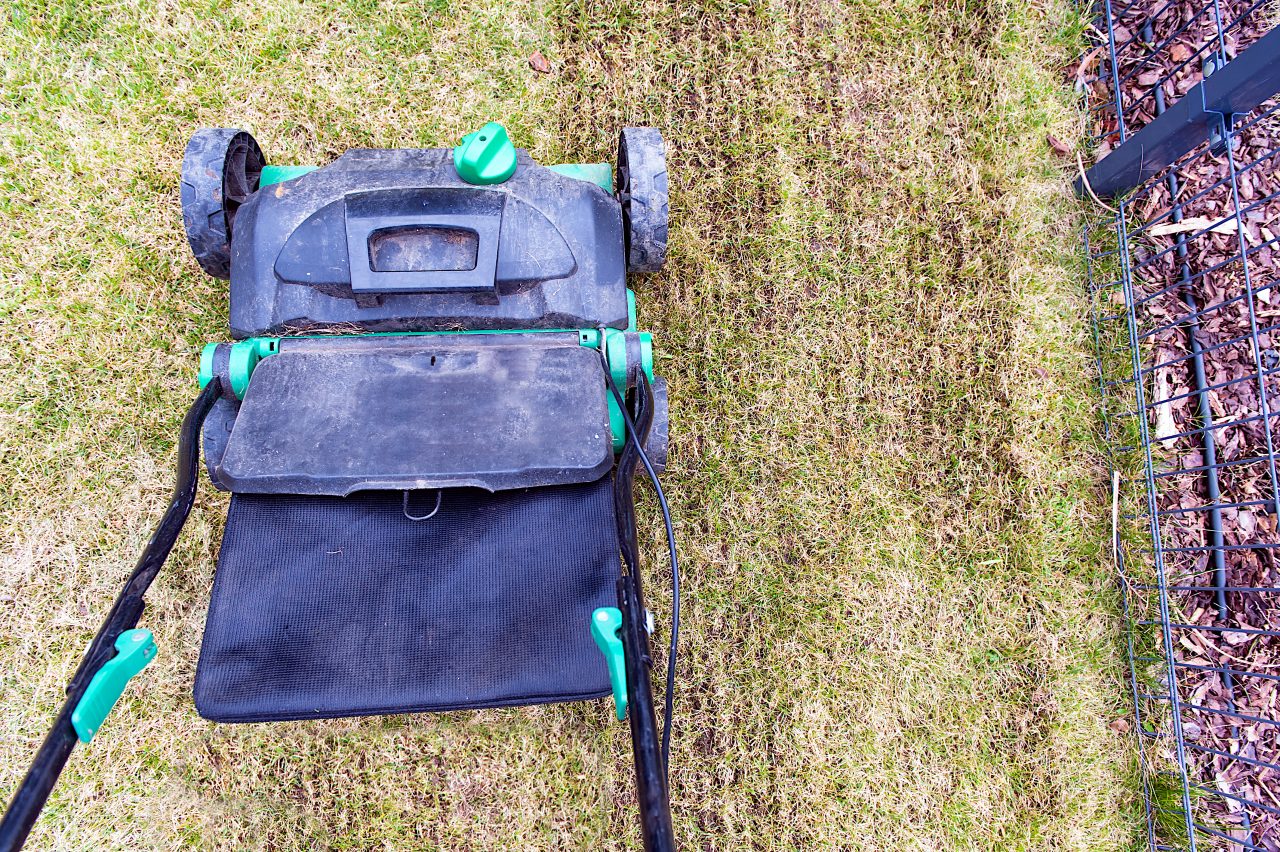
Notice the length of the grass in the above picture is relatively short. Scarifying a lawn with grass that is already short will look different to scarifying grass that is longer. With the shorter grass, the soil is often more exposed in certain area resulting in more darker patches but of the amount of lawn debris left over will be less.
Scarifying a lawn with short grass will look similar to a lawn that has been scalped.
In the image below, the grass is slightly longer and the lawn looks a little less bare.

If the lawn had plenty of debris, you may be left with a lot of dead grass/moss sitting on top your lawn.
It’s pretty incredible to see how much build up you can get. Just imagine how much this prevents water and airflow form getting down into the ground! You’ll definitely want to remove this extra debris from your lawn. The best way to do that is to use a yard rake and sweep the debris into little piles so you can easily pick it all up.
A Week After Scarification
After a short while you should begin to see some signs of recovery if the grass is given the right conditions. At wet and warm environment is key for the recovery process. You might just be able to see some areas slightly beginning to green up but don’t be expecting anything great just yet.

4-6 Weeks After Scarification
By this point, the lawn should be mostly recovered. Most lawn care companies actually say that a lawn will be fully recovered by the six week mark but that does assume the lawn gets what it needs.
In any event, by the six week mark I would be expecting a lawn to be looking pretty healthy. There may be some areas which still look brown and bare and these may need some extra encouragement but overall the lawn should be mostly recovered by this time.
As a result of scarification process, more air is able to get down into each individual grass plant which helps it to develop. After scarification, your lawn should look thicker, fuller and the color should be much improved.
Factors That Affect How Long the Lawn Will Take To Recover
While you need to give your lawn quite a bit of time to recover from scarifying on its own, there are some things that heavily alter the speed of its recovery. If you don’t take extra care and pay attention during this time, you may end up damaging your lawn and you won’t get the long term benefit you’re looking for.
Fertilizer
One of the best things you can do to help speed up the process is to fertilize. The nitrogen actually helps to push growth of the grass and develop the roots faster than they would if you just left the lawn to recover on its own. It’s best not to go overboard with the fertilizer in the initial stages after scarification when the lawn is already stressed out. I’d recommend waiting until you have a good amount of growth before putting down any fertilizer.
If you are going to fertilize, make sure you give you lawn plenty of water!
Season
For most lawns, it’s going to be fine to scarify once a year. Some people may want to scarify with slightly less frequency – every 2-3 years but I’d generally recommend once a year for most folks. Like with most lawn care work, doing a little and often tends to work out really well.
The general recommendation is to scarify a lawn in the spring where your grass is growing strongly and this is definitely going to be the time of the season if you’re looking for a time when your lawn is going to be able to recover quickly.
The increasingly warmer temperates and a good amount of rainfall will provide the ideal conditions for the first growth spurt of the year for those cool season grass types. Since your grass is already growing quickly during the spring, it’s going to take less time to recover from scarifying during other times in the season.
If you are going to scarify in the spring, make sure it’s not too early in the season. The grass needs to be growing if your lawn is going to recover. The right time can vary quite a bit tough, this will depend on where you live and how quickly things warm up.
The absolute worse time to scarify a lawn is during the winter month where your grass is already struggling and maybe laying dormant. If you decide to scarify during this time, you may end up severely damaging the lawn so you can forget any fast recovery time for scarifying during the cooler months of the year.
Scarification Depth
Most scarifiers will have a setting which you can choose to set how aggressive you want the scarification to be.
Lawns that have been unmanaged and left for a long time are more likely to have a greater build up of thatch, moss and other debris so they tend to require deeper scarification depth – this is usually around 5mm or so.
For lawns that have been well maintained, you can probably get away with being a little less aggressive. Here you may only need to scarify to a depth of 3mm.
As a general rule, the deeper the scarification, the more aggressive the process is on your lawn and so the harder it is to recover.
Lawns scarified to a greater depth will take more time to recover.
Watering
Providing a sufficient amount of water to your lawn is essential even at the best of times but its absolutely critical for recovery after scarification. This ties in nicely with the seasonality aspect. If you’re not getting a sufficient amount of rainfall, you’re going to have to provide the water yourself!
Overseeding
Another thing you can do to push some extra growth back into the lawn to help it recover is to overseed the lawn. You should try and find some grass seed that matches what you have in your existing lawn.
It only takes new grass seed a couple of months or so to be fully established so overseeing is a great thing to do if you want to work to fill in some more of the bare areas.
Final Words
The most important thing to remember after scarifying a lawn is that you need to stay patient! Now that you’ve done all the hard work, you need to let your lawn recover by giving it some time and the right conditions to grow back better than ever. This process usually last 6-8 weeks. Don’t freak out , just remember that scarification is a long term game, the rewards will pay off eventually!


